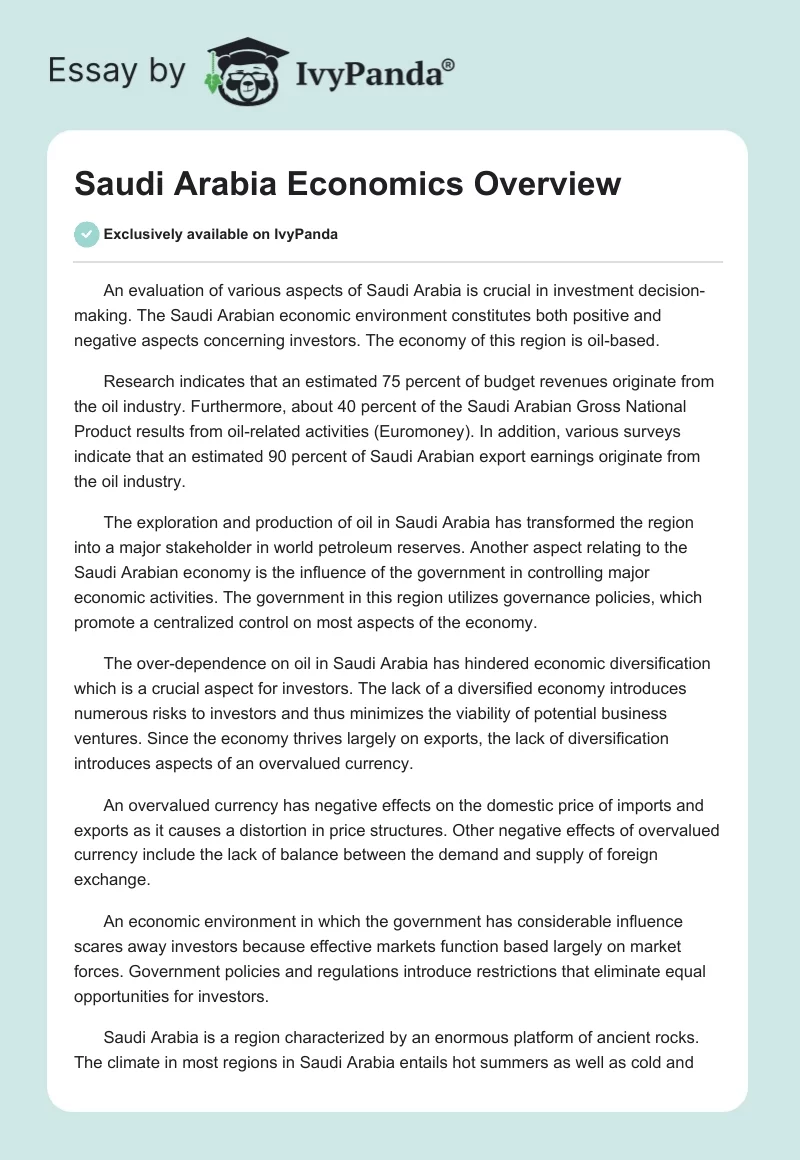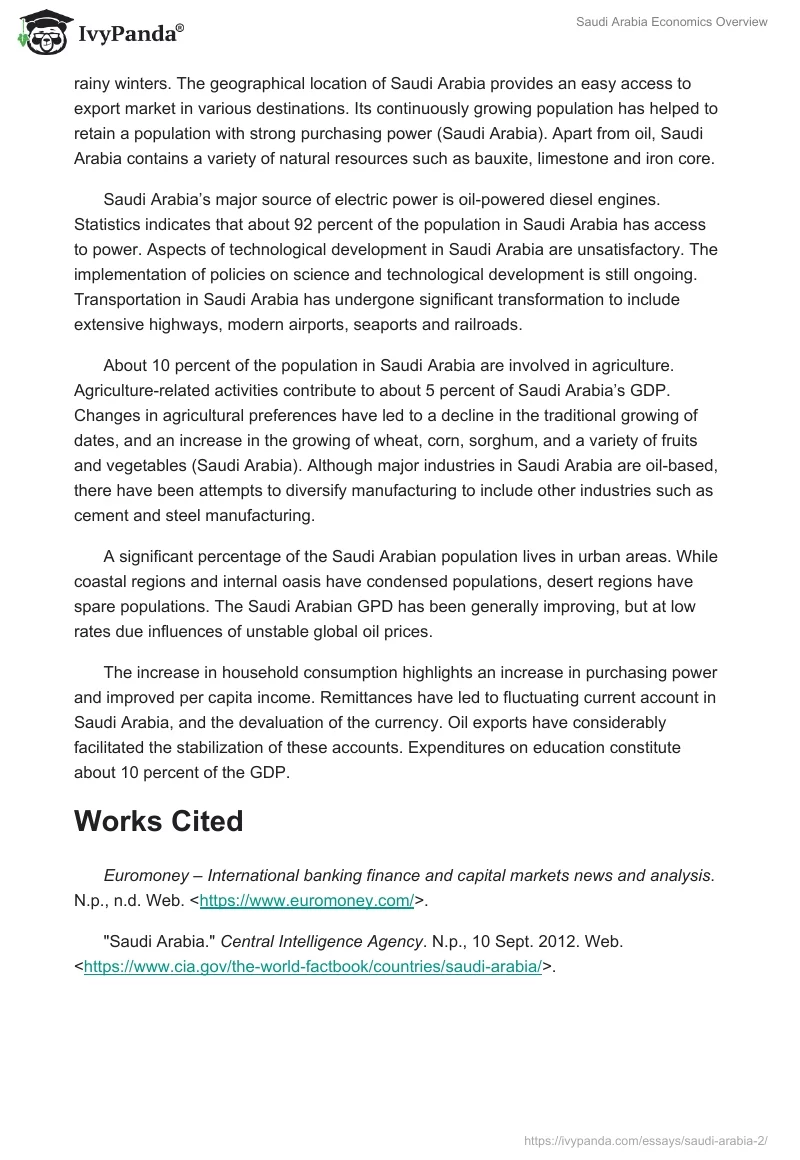An evaluation of various aspects of Saudi Arabia is crucial in investment decision-making. The Saudi Arabian economic environment constitutes both positive and negative aspects concerning investors. The economy of this region is oil-based.
Research indicates that an estimated 75 percent of budget revenues originate from the oil industry. Furthermore, about 40 percent of the Saudi Arabian Gross National Product results from oil-related activities (Euromoney). In addition, various surveys indicate that an estimated 90 percent of Saudi Arabian export earnings originate from the oil industry.
The exploration and production of oil in Saudi Arabia has transformed the region into a major stakeholder in world petroleum reserves. Another aspect relating to the Saudi Arabian economy is the influence of the government in controlling major economic activities. The government in this region utilizes governance policies, which promote a centralized control on most aspects of the economy.
The over-dependence on oil in Saudi Arabia has hindered economic diversification which is a crucial aspect for investors. The lack of a diversified economy introduces numerous risks to investors and thus minimizes the viability of potential business ventures. Since the economy thrives largely on exports, the lack of diversification introduces aspects of an overvalued currency.
An overvalued currency has negative effects on the domestic price of imports and exports as it causes a distortion in price structures. Other negative effects of overvalued currency include the lack of balance between the demand and supply of foreign exchange.
An economic environment in which the government has considerable influence scares away investors because effective markets function based largely on market forces. Government policies and regulations introduce restrictions that eliminate equal opportunities for investors.
Saudi Arabia is a region characterized by an enormous platform of ancient rocks. The climate in most regions in Saudi Arabia entails hot summers as well as cold and rainy winters. The geographical location of Saudi Arabia provides an easy access to export market in various destinations. Its continuously growing population has helped to retain a population with strong purchasing power (Saudi Arabia). Apart from oil, Saudi Arabia contains a variety of natural resources such as bauxite, limestone and iron core.
Saudi Arabia’s major source of electric power is oil-powered diesel engines. Statistics indicates that about 92 percent of the population in Saudi Arabia has access to power. Aspects of technological development in Saudi Arabia are unsatisfactory. The implementation of policies on science and technological development is still ongoing. Transportation in Saudi Arabia has undergone significant transformation to include extensive highways, modern airports, seaports and railroads.
About 10 percent of the population in Saudi Arabia are involved in agriculture. Agriculture-related activities contribute to about 5 percent of Saudi Arabia’s GDP. Changes in agricultural preferences have led to a decline in the traditional growing of dates, and an increase in the growing of wheat, corn, sorghum, and a variety of fruits and vegetables (Saudi Arabia). Although major industries in Saudi Arabia are oil-based, there have been attempts to diversify manufacturing to include other industries such as cement and steel manufacturing.
A significant percentage of the Saudi Arabian population lives in urban areas. While coastal regions and internal oasis have condensed populations, desert regions have spare populations. The Saudi Arabian GPD has been generally improving, but at low rates due influences of unstable global oil prices.
The increase in household consumption highlights an increase in purchasing power and improved per capita income. Remittances have led to fluctuating current account in Saudi Arabia, and the devaluation of the currency. Oil exports have considerably facilitated the stabilization of these accounts. Expenditures on education constitute about 10 percent of the GDP.
Works Cited
Euromoney – International banking finance and capital markets news and analysis. N.p., n.d. Web. <https://www.euromoney.com/>.
“Saudi Arabia.” Central Intelligence Agency. N.p., 10 Sept. 2012. Web. <https://www.cia.gov/the-world-factbook/countries/saudi-arabia/>.


